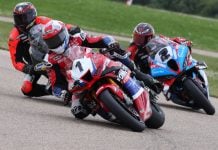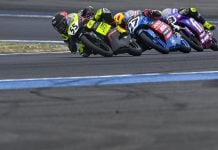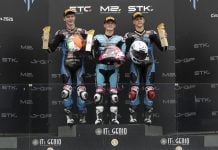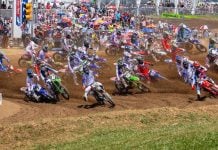October 24, 2001
By David Swarts
Novice Justin Adams became the first racer to use Airfence soft barriers deployed at Road Atlanta for the first time in the 27-year history of the WERA Grand National Finals.
Adams crashed his Suzuki TL1000R in turn 12 during Wednesday-morning practice.
“I hit a bump in the middle of the corner,” said Adams. “The bike lost traction and never came back.”
Adams lowsided at over 100 mph and went into the Airfence so hard that the “pop” of the device’s air-blow-off-valves was heard inside the third floor of the control tower. Ambulance crews were immediately dispatched but simply rolled past the accident scene as Adams was already standing up and surveying the damage to his Suzuki by the time they arrived.
After Adams impacted the device, it re-deployed itself over the rider, as designed, ready to take another hit.
There are 39 sections of Alpina Air Module, Alpina Defender foam modules, and Airfence-brand sections deployed around Road Atlanta’s 2.5-mile road course.
The safety barriers are in place:
On riders’ right at the entrance of turn two;
On riders’ right through the fast, sweeping left-hand turn three;
At the exit of fast, sweeping right-hand turn four;
At the end of the pit wall between the track and the old pit entrance road on riders’ left;
On the outside of turn 12 at the bottom of the hill;
And in front of the wall on pit lane in case riders overshoot the turn there during Friday’s WERA National Endurance Series 4-hour.
At least two sections of the inflatable devices are being held in reserve.
Adams said that his family donated $1000 to the Roadracing World Air Fence Fund earlier this year and that he felt that they definitely got their money’s worth.











